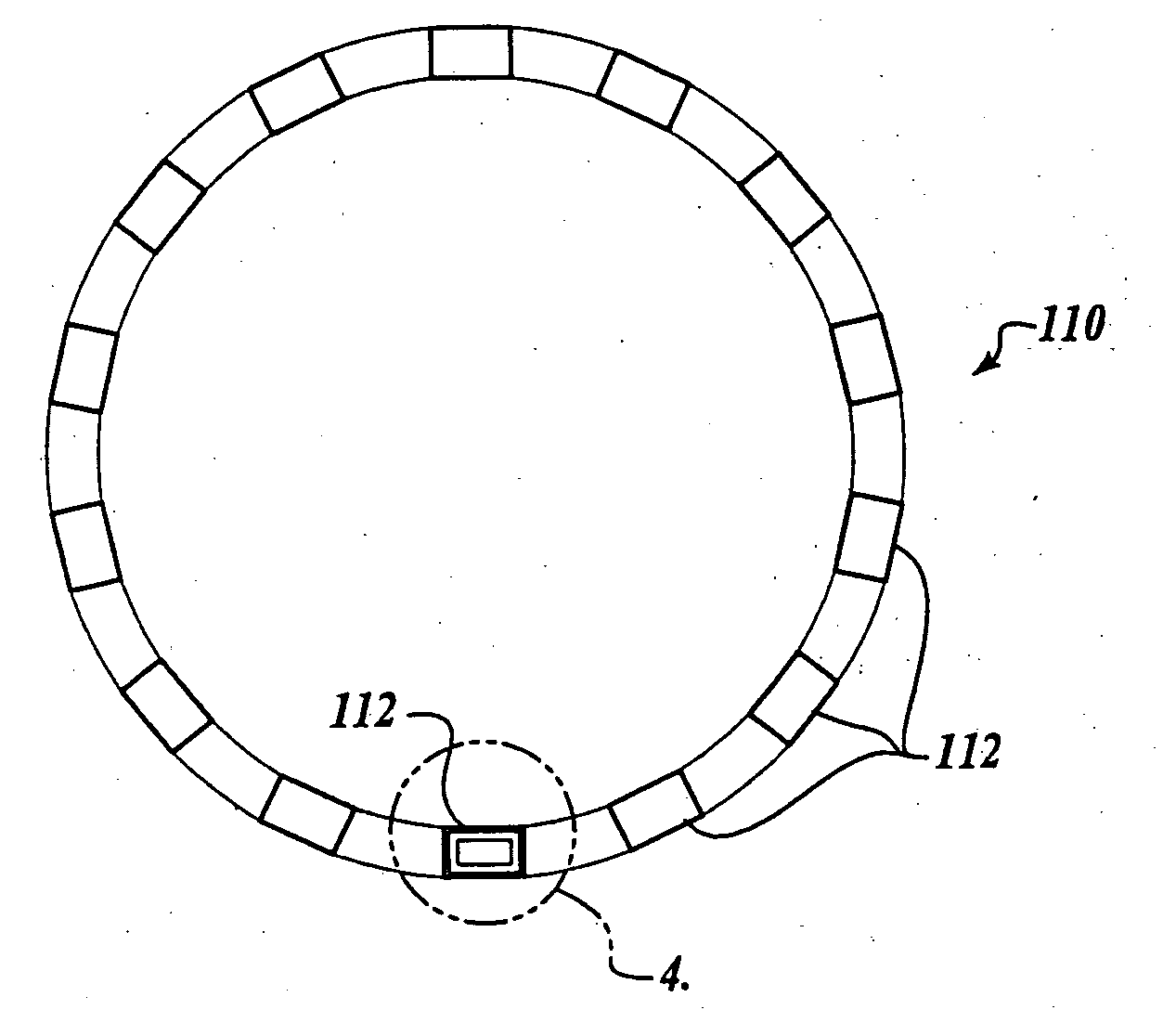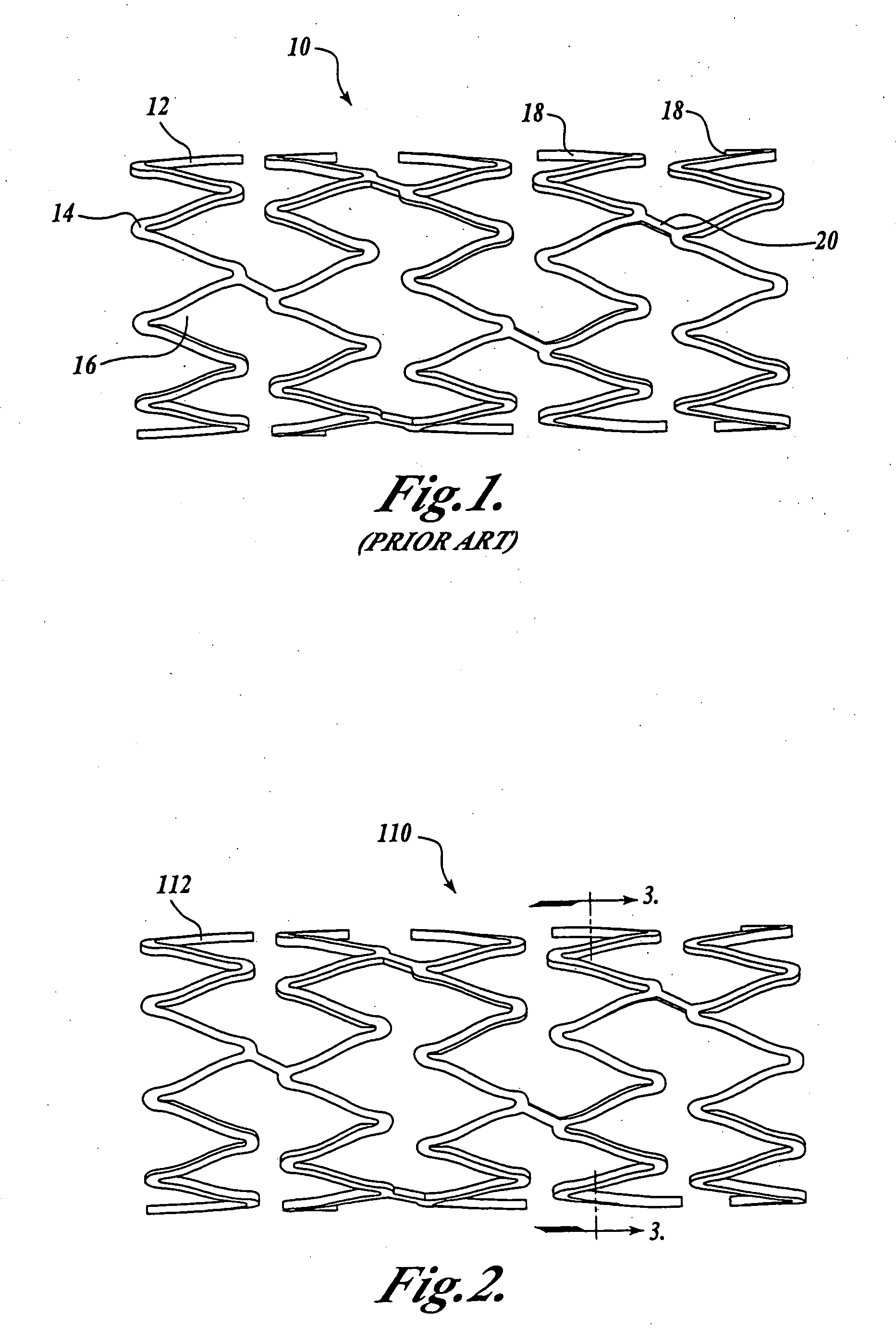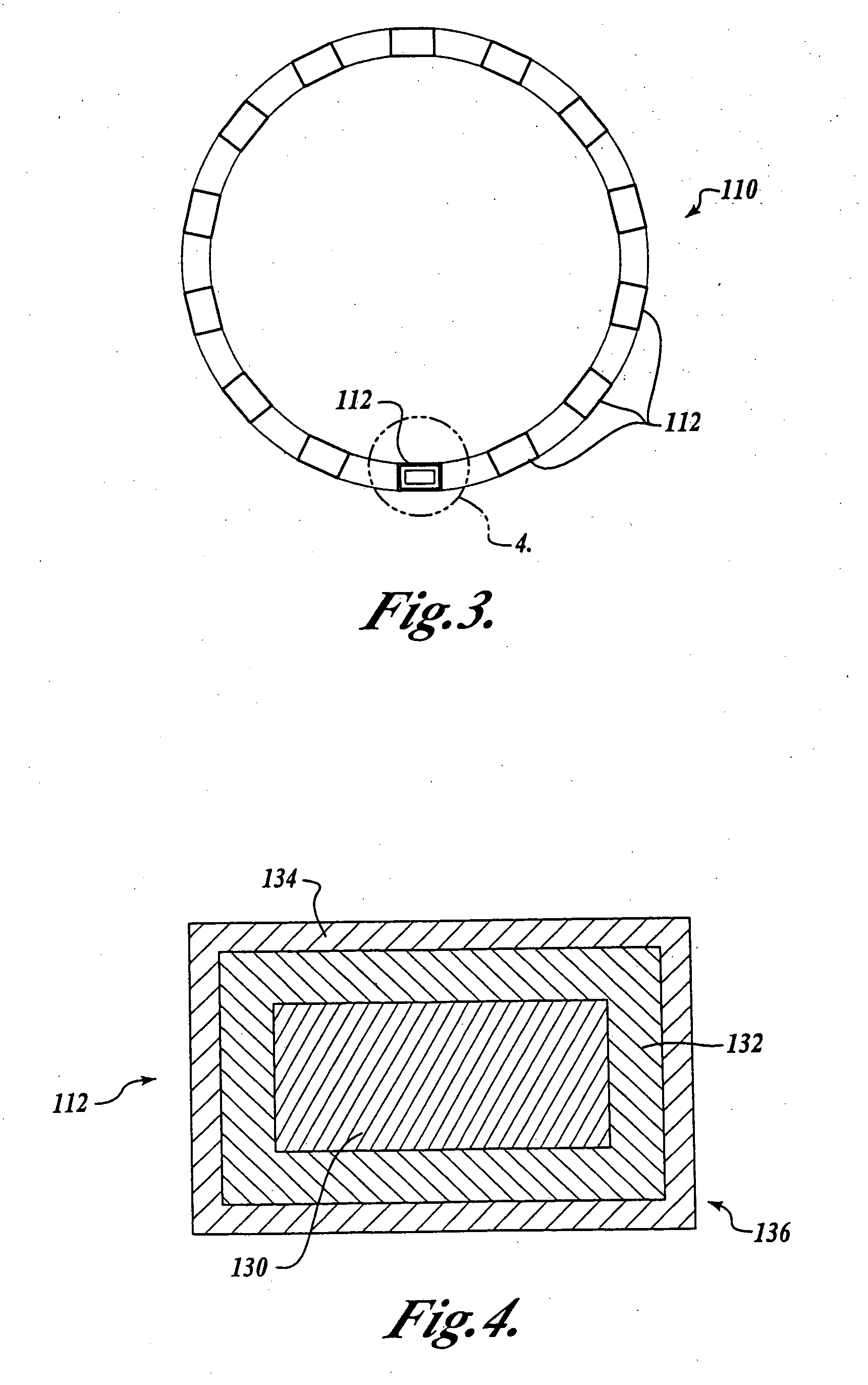Medical device having radio-opacification and barrier layers
a barrier layer and radio-opacification technology, applied in the field of invivo stents, can solve the problems of myocardial infarction, abrupt closure and restnosis of angioplasty procedures, and achieve the effect of reducing conta
- Summary
- Abstract
- Description
- Claims
- Application Information
AI Technical Summary
Benefits of technology
Problems solved by technology
Method used
Image
Examples
Embodiment Construction
[0022] While, as will be better understood from the following description, the present invention was developed for coronary stents and, thus, is expected to find its primary use with such coronary stents, it is to be understood that the invention can be used with other medical devices such as vena cava filters, aneurysm coils or other implantable devices that require the ability to be visualized in-vivo and to have a bio-compatible barrier layer. Thus, it is to be understood that the disclosed embodiment is only by way of example and should not be construed as limiting.
[0023] Prior to describing an illustrative embodiment of the invention, a brief discussion of the structure of one type of medial device is set forth. In this regard, attention is directed to FIG. 1, which illustrates a conventional medical device known in the art as a coronary stent 10. The coronary stent 10 is deployed in-vivo at a stenosed vessel following a PTCA procedure. The stent 10 is deployed from a delivery...
PUM
 Login to View More
Login to View More Abstract
Description
Claims
Application Information
 Login to View More
Login to View More - R&D
- Intellectual Property
- Life Sciences
- Materials
- Tech Scout
- Unparalleled Data Quality
- Higher Quality Content
- 60% Fewer Hallucinations
Browse by: Latest US Patents, China's latest patents, Technical Efficacy Thesaurus, Application Domain, Technology Topic, Popular Technical Reports.
© 2025 PatSnap. All rights reserved.Legal|Privacy policy|Modern Slavery Act Transparency Statement|Sitemap|About US| Contact US: help@patsnap.com



